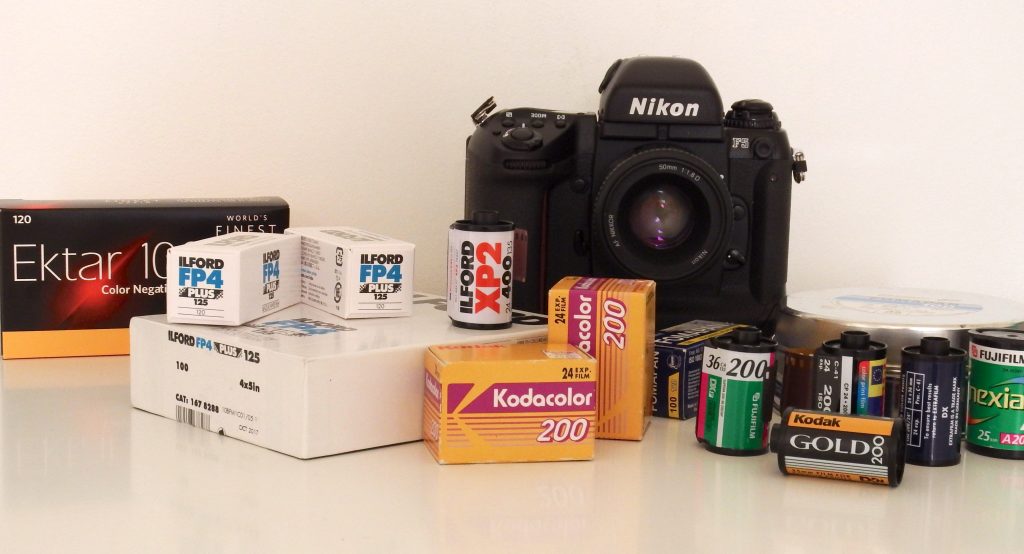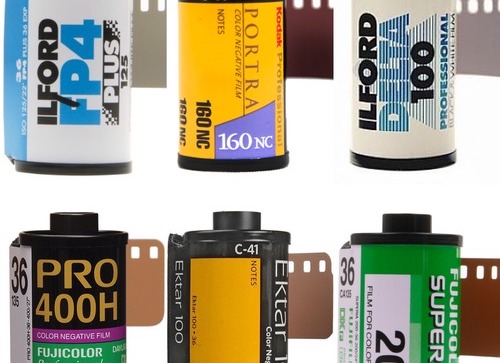I have used several different film sizes and types and I will use this page to share some experiences. It can help you avoid the same errors – or exploit them to create artistic pictures, whatever you like most 🙂
Not so much content so far, as I have just recently restarted taking film and are rebuilding my experience especially on black&white that I develop myself. I have used a C41 developer, therefore in the future I will share some experience on Kodak Ektar, Fujicolor, and some other color negative film.
Be aware that some of the film are not available new anymore, I might have bought them “used” or should I rather say second hand. Most of these are past their “develop before date” but I don’t take that very seriously. Many of my most successful experiments have used expired film, some even expired as much as 50+ years. Therefore, if you want to try these film, you must explore eBay and the like to find old expired film.

Observations
Fomapan 100 ISO (I don’t know if this also covers the 400 ISO type):
- I exposed half of two 35 mm film sitting in two different cameras in the summer of 2017 and exposed the rest of the film in february 2018. The pictures from summer are very grainy, not just a little but rather extremely so. At the same time contrast is very low. But the pictures on the same film exposed a few days before development look completely different with nice small grain and reasonable contrast. I haven’t experienced this using Ilford FP4 and Pan F, wonder if this is some peculiarity of the Fomapan film. I’ll have to try the same with the F400.
Fomapan 400:
- I have shot a number of Fomapan 400 films in 120 format, and have very nice results with it. Most of them were developed in Rodinal, and most were stand developed. Results were pretty fine grained for an ISO 400 film, the contrast was medium for the stand developed, and to the high side for those developed according to recommendations. Only thing that can be a bit annoying is the grain. Normally I like a bit of graininess, but when visible this grain has a special character, that I don’t like. It seems to have a sort of middle dot in the grain that make the grain stand out. But it’s only when using 35mm film I take note of the grain, it isn’t visible when using 120 film format, at least not in the enlargements I have seen it.
Ilford FP4 125 ISO:
- This has become one of my favourite films as it gives me very attractive results no matter if I develop normally or use stand development. It is a pretty fine grained film that in spite of this gives a nice bit of contrast. When visible, the grain in this film has a very pleasing look.
Ilford HP5 400 ISO:
- High contrast and visible grain is something you must like, if you are to become a fan of this film. Even when used in 120 format the grain is always visible to some extent (I haven’t yet tried it in 4×5″ format, though I have bought a box, now sitting in my freezer), but the grain quality is much different from that of the Fomapan 400 although this is also an ISO 400 film, and it doesn’t have the dotted graininess of the Fomapan. It probably won’t become my favourite ISO 400 film, when used at box speed, that spot is right now reserved for Ilford XP2 super, but it is a film that can be pushed a lot, and for that I like it.

Ilford Pan F 50 ISO:
- This is definitely a fine grained film, but it is not a film to my liking. The contrast is quite low, which is not unusual for a low ISO film, but I shoot film because I like the look of film compared to digital images. This film almost seem to lack grain, and gives a look more like a digital image though only black & white of course, and that is not to my liking. I still have som rolls left from a recent buy, that I will try to misuse in order to achieve some interesting results. Or maybe I should pull them out of the freezer and leave them in my car in the sun for some weeks, then they might give some interesting results. Right now results are just too perfect, but you might like that.
Ilford Delta 100: Nothing to note so far
Ilford Delta 3200: Nothing to note so far
Ilford Ortho Plus 80: Nothing to not so far
Fuji Across 100 ISO (old version):
- This is probably my favorite ISO 100 film, and I will make a special on this one, as it might seem like I film that I wouldn’t like from what I have written on my favorite characteristics.
Fuji Across 100 ISO (new version): Nothing to note so far
Fuji Neopan 400 (not available new anymore): Nothing to note so far
Fuji Neopan 1600 (not available new anymore): Nothing to note so far
Kodak Tri-X 400 ISO: Nothing to note so far
Ilford XP2 super 400:
- This is a very peculiar film but also a film I have come to love. The peculiarity comes from the fact that though it can be developed in black & white chemicals it is meant to be developed in C41 color chemicals. My experience is that if you want to exploit the extreme potential of this film, you will have to go for the C41 process. But don’t worry it’s not very much more difficult than doing b&w at least not using the Tetenal C41 set that I normally use. And the results are great, good tonality, fine grain and generally quite tolerant to the development temperature – at least compared to developing color film in the C41 chemicals. I will make a full review of the XP2 super 400.
Rollei Retro 400S:
- I probably shouldn’t write anything on this film, as I have only tried some 120 rolls that I bought second hand. They expired shortly before I acquired them, but probably have been stored to hot, as my results are quite ugly. They seem to have some sort of spot disease, and at the same time there are some cloudiness in the results. I hope to get some fresh stock in the future in order to give this film a fair chance.
Foton 80 mikrofilm: Nothing to note so far
Colour film
Fujicolor 200: (not available new anymore): Nothing to note so far
Kodak Ektar 100:
- A lovely color film that has pleasing colours for landscapes, which is the only thing I have used it for. Grain is fine and nice when visible, and the contrast is also quite good. Only thing I don’t like about this film is the sensitivity towards incorrect exposure, and that goes for both over and under exposure. Under exposure gives dark areas that are impossible to raise in post production (after scanning and when digitally trying to improve) without a very noisy result. Over exposure very fast results in a totally washed out look. It seems the exposure latitude of this film is rather on the low side, when compared to some of the Fujifilms I have tried. Anyway, if you have low contrast scenes, and can hit the exposure spot on, it is a beautiful film that portrais nature in the best way, but considering the colour rendition of this film I wouldn’t personally use it for anything else and especially not for portraits or anything with skin tones.
Kodak Ektachrome 64 (not available new anymore): Nothing to note so far